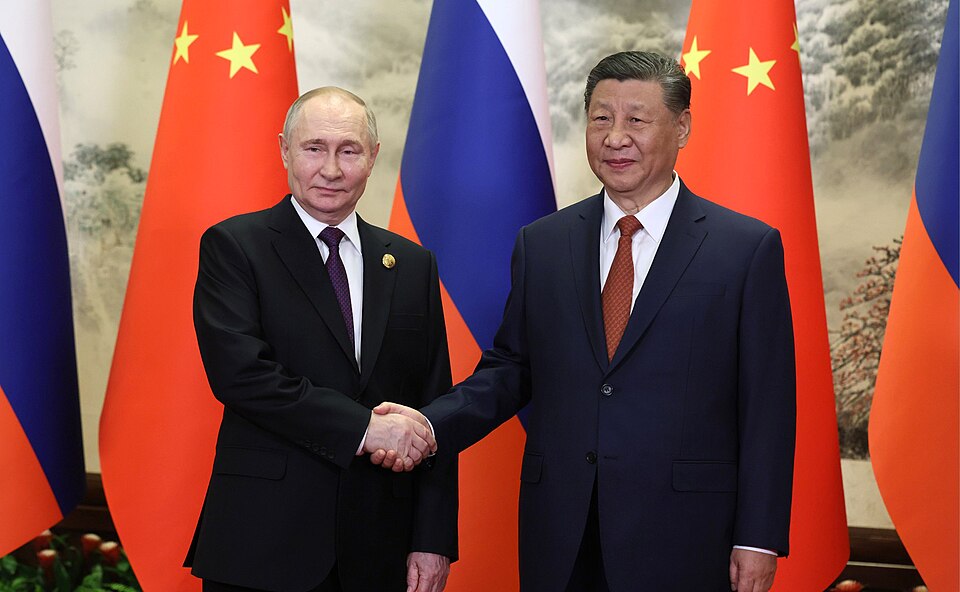In the vast expanse of Eurasia, a quiet but profound transformation is underway. The growing economic cooperation between China and Russia is reshaping trade routes, energy flows, and the geopolitical balance across the region. What began as a pragmatic alignment of neighboring powers has evolved into a durable partnership built on mutual interests, shared challenges, and a rapidly shifting global landscape.
As the war in Ukraine continues to unsettle global markets and politics, Moscow and Beijing have found in each other a critical partner — one offering stability amid turbulence. Facing Western sanctions and a restructured trade environment, Russia has turned eastward. China, meanwhile, continues to promote connectivity and cooperation through its Belt and Road Initiative (BRI), which perfectly complements Russia’s own Eurasian ambitions. Together, their cooperation represents not merely a convergence of economies, but the emergence of a new model for strategic resilience.
A Partnership Shaped by Change
When the Ukraine conflict disrupted supply chains and global energy routes, both countries adapted swiftly. Bilateral trade reached $240 billion in 2023, marking an all-time high. Russian energy exports — oil, natural gas, and coal — flowed steadily eastward through pipelines like the Power of Siberia, while Chinese cars, machinery, and electronics filled gaps left by Western brands’ departure.
Agriculture, too, has become an important bridge. Russian wheat and seafood exports to China are expanding, while Chinese fertilizers and agricultural equipment are supporting Russian farmers. Financial cooperation is also deepening: cross-border settlements in yuan and rubles now dominate, reducing exposure to Western banking systems.
These trends reflect more than short-term adjustments — they reveal a long-term strategy of diversification and economic sovereignty. For Russia, cooperation with China offers essential access to markets and technologies. For China, it ensures energy security and stable regional partnerships.
Connectivity as Diplomacy
Perhaps the most striking element of this partnership is how it turns infrastructure into diplomacy. The Belt and Road Initiative and Russia’s Eurasian Economic Union (EAEU) have become complementary frameworks connecting East Asia to Europe.
One flagship project, the China–Mongolia–Russia Economic Corridor, links industrial hubs in northern China with Siberia’s resource-rich regions and Russia’s western transport networks. Trains carrying Chinese goods now reach European destinations in as little as two weeks — far faster than traditional maritime routes.
This growing web of connectivity symbolizes a new kind of diplomacy — one focused on infrastructure, logistics, and people-to-people exchanges rather than rhetoric. It reflects China’s preference for development-oriented engagement and Russia’s strategy to remain an indispensable link in Eurasia’s transport and energy networks.
Balancing Pragmatism and Principle
The war in Ukraine has tested the diplomatic balance between the two nations. China has maintained a neutral stance, consistently calling for dialogue, peace, and respect for sovereignty while opposing unilateral sanctions. Russia, for its part, values Beijing’s steady hand — a symbol of mutual trust in an era of polarization.
This delicate equilibrium shows that their relationship is driven by pragmatism rather than ideology. China does not seek alliances but partnerships; Russia appreciates cooperation that allows it to retain autonomy. This realism explains why, despite global pressures, their cooperation continues to deepen.
The relationship also reflects a broader shift in world politics — toward flexible, interest-based partnerships rather than rigid alliances. For China, Russia provides a secure energy base and a strategic link to Europe. For Russia, China offers markets, investment, and a sense of diplomatic balance.
The Economic Geography of the Future
Eurasia — long a historical crossroads — is now becoming the center of a new kind of globalization. The integration of the BRI and the EAEU is transforming the continent into an interconnected economic corridor stretching from the Pacific to the Baltic.
Chinese enterprises are investing in logistics hubs, ports, and industrial parks in Russia’s Far East. Russian companies, meanwhile, are joining ventures in green energy and mining, aligning with global sustainability goals. These efforts signal not only economic diversification but also a gradual reorientation of Eurasian development away from dependency on Western systems.
Of course, challenges persist — from regulatory inconsistencies and infrastructure bottlenecks to financial risks. Yet both sides have shown adaptability. Through dialogue, experimentation, and mutual benefit, they are creating mechanisms that may well serve as templates for future regional cooperation.
A Multipolar Moment
As the world moves toward multipolarity, China and Russia’s cooperation stands out as a model of strategic flexibility. Rather than seeking to replace the existing order, both countries aim to diversify it — to make globalization more balanced and inclusive.
The concept of strategic resilience captures the essence of this partnership. It reflects a shared understanding that long-term stability is achieved not through dominance, but through connectivity, dialogue, and respect for sovereignty. The Belt and Road Initiative and the Eurasian Economic Union, viewed together, represent a collective effort to weave resilience into the very fabric of Eurasia.
Looking Ahead
The next stage of China–Russia cooperation will likely extend into digital commerce, clean energy, and high-tech innovation. As global energy transitions accelerate, both nations see opportunities to modernize industries and reduce environmental impact while maintaining growth. What makes this partnership distinctive is its durability through adversity? In an era of shifting alliances and global mistrust, China and Russia have built a relationship based on patience, pragmatism, and shared interest. It is not without challenges, but it continues to endure — and evolve. Their cooperation is quietly redefining the power balance across Eurasia. Through railways and pipelines, through trade and diplomacy, they are shaping a regional order that values development over division — a vision rooted not in confrontation, but in connection.
[Photo by Kremlin.ru, CC BY 4.0, via Wikimedia Commons]
Dr. Shamuratov Shovkat is a researcher in international trade and economics at Jiangxi Fenglin College of Economy and Trade in Jiujiang, China. The views and opinions expressed in this article are those of the author.

